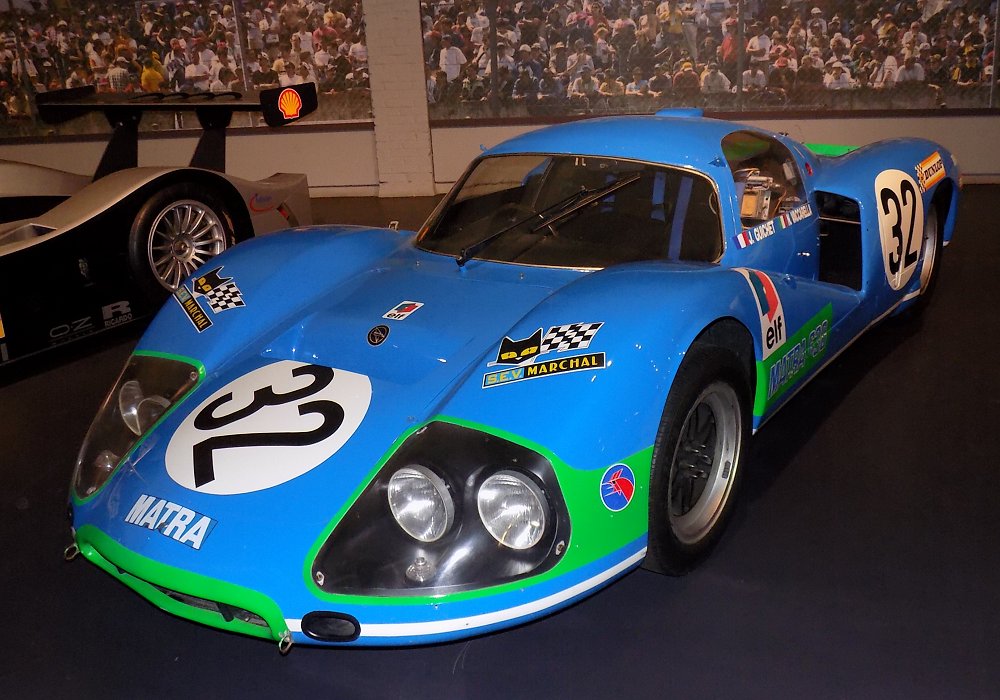Description
The Matra 630 V12 was one of the most important racing prototypes in Matra’s journey toward becoming a dominant force in endurance racing. Introduced in 1967, the 630 represented a major step forward from the earlier MS620, combining improved aerodynamics, a stronger chassis and — eventually — the engine that would become the heart of Matra’s racing identity: the screaming Matra V12. Although the early 630 cars initially ran with 2-litre BRM engines while the V12 was still under development, the 630 V12 variant marked the moment when Matra’s endurance programme took on its unmistakable character. This car laid the foundation for the legendary MS670 series that would go on to conquer Le Mans in the early 1970s.
The 630 was built around a full aluminium monocoque chassis, a clear evolution of Matra’s increasing sophistication in racing design. It featured a long, low body intended to maximise high-speed stability and reduce drag over the Mulsanne Straight. The distinctive shape, with its rounded nose, sloping tail section and large rear bodywork, demonstrated Matra’s strong interest in aerodynamics — an area the company would continue to refine throughout its endurance-racing programme. The body was constructed from lightweight fibreglass panels over the aluminium core, keeping weight low while allowing modifications during development.
The most significant development for the 630 was the introduction of the Matra-built 3.0-litre V12 engine. This engine would become one of the most iconic racing engines of the era, known for its high-revving nature, complex engineering and unmistakable sound. In its early form in the 630 V12, the engine produced around 390 horsepower, delivered at extremely high engine speeds. It featured four overhead camshafts and twelve individual intake trumpets, giving it both a distinctive appearance and a razor-sharp throttle response. The V12 was compact for its configuration, allowing Matra engineers to optimise weight distribution and keep the prototype’s centre of gravity low.
The engine was mounted mid-ships and paired with a five-speed racing gearbox. Cooling was handled by large side radiators integrated into the car’s bodywork, a necessary addition given the heat produced by the early V12 units. Suspension used double wishbones at the front and rear, combined with coil springs and dampers tuned for both stability on long straights and agility through the tighter sections of endurance circuits. Braking was provided by ventilated discs all round, and the car’s overall weight was kept close to 700 kg, impressive for a prototype of its time.
The 630 V12 first appeared in racing in 1968, though reliability was still a major challenge. Matra’s V12 was fast but highly complex, and early engines suffered from overheating and durability issues during long-distance racing. Even so, the speed of the 630 V12 was immediately evident. At Le Mans, the car showed strong pace before suffering mechanical failures, but each race provided crucial lessons that informed the development of the later 650 and 660 prototypes.
In handling terms, the 630 V12 demonstrated many of the traits that would define Matra’s later endurance cars: excellent high-speed stability, good responsiveness and a chassis balance that allowed drivers to push hard without excessive fatigue. The car’s long tail helped it remain planted at very high speeds, particularly on the Mulsanne Straight, where the V12’s soaring revs gave it a thrilling, unmistakable presence. Drivers of the era frequently remarked on the engine’s extraordinary sound — a metallic, high-pitched shriek that became a signature of Matra’s entire racing identity.
While the 630 V12 never achieved major international victories, its importance cannot be overstated. It marked the first competitive use of the Matra V12 in endurance racing, proving the concept and laying the engineering groundwork for the dominant MS670 series. The 630 programme allowed Matra to gather crucial experience in engine cooling, aerodynamics, chassis rigidity and long-distance durability. Many of the mechanical concepts first explored on the 630 would be refined and perfected in the cars that later won three consecutive Le Mans titles between 1972 and 1974.
Today, the Matra 630 V12 is remembered as a pivotal transitional model in Matra’s racing evolution. It represents the dawn of the Matra V12 era — an era defined by innovation, national pride, and some of the most evocative racing machinery ever built. With its combination of advanced aerodynamics, lightweight construction and that unforgettable twelve-cylinder engine, the 630 V12 remains one of the most characterful and historically significant prototypes in French motorsport history.


